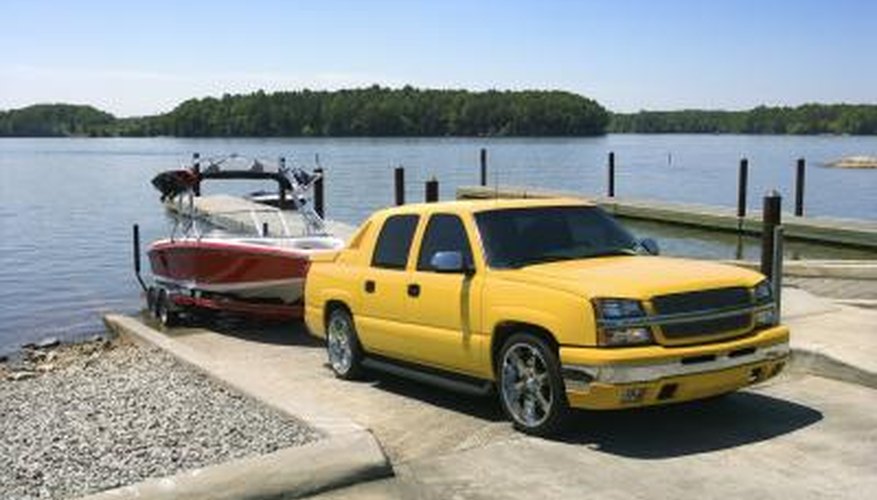Sources like the Mississippi State University Extension Service explain why concrete is the best surface to use for a boat ramp because of its hard, unyielding surface. Boaters know that to be true from experience. Concrete doesn't shift like gravel or dirt, won't form ruts that will trap your tires and won't "ball up" behind the powerful force of your boat's propeller. Concrete ramps are more difficult to create than stone or compressed dirt, however. The slabs for concrete boat ramps are pre-poured, and then hoisted into position. Anyone can make a concrete boat ramp, but it requires heavy equipment and lots of planning.
- Sources like the Mississippi State University Extension Service explain why concrete is the best surface to use for a boat ramp because of its hard, unyielding surface.
Measure the desired area. Allow enough room to manoeuvre a tow vehicle and a trailer and back down straight into the ramp area. The best angle for a boat ramp is no more than 15 per cent slope. A steeper grade will cause dangerous conditions when the ramp gets coated with algae and other debris from the water. The weight of a boat can pull a truck into the water if the ramp is slippery and the grade is too steep.
Tailor the design of your ramp to boat size and ramp function. For small boats, a 12-foot ramp (from water line to end) will suffice. For large boats, or ramps for public use and heavy traffic, allow at least 20 feet of ramp below the waterline.
- Tailor the design of your ramp to boat size and ramp function.
- For large boats, or ramps for public use and heavy traffic, allow at least 20 feet of ramp below the waterline.
Use a backhoe to create the right slope, and smooth out the surface for your concrete slab. Laying the concrete slab on top of ridges, mounds or drop-offs will increase the chance the slab will eventually break or crumble under the pressure of heavy vehicles. Extend the grade up twice as far above the waterline as below it. This serves two purposes. Concrete slabs must be poured on the same angle grade as they will be placed to prevent stress fractures from a change in grade, and in actual use, this placement will allow tow vehicles the best leverage and easiest access when launching or retrieving boats.
Build a slab form with plywood base and 2-by-6 sides at the top of the ramp area, just above the waterline. Nail the 2-by-6s in place and brace with wood stakes every few feet to prevent buckling at the sides when the concrete is poured into the form. Use two 2-by-6s stacked on top of each other for the sides of ramps that will hold large boats -- over 20 feet -- or heavy vehicles. Ramps for small boats need to be at least 6 inches thick; ramps for large boats should be double that.
- Build a slab form with plywood base and 2-by-6 sides at the top of the ramp area, just above the waterline.
- Nail the 2-by-6s in place and brace with wood stakes every few feet to prevent buckling at the sides when the concrete is poured into the form.
Lay 60-grade rebar lengthwise and diagonally every 4 inches. Leave a 6-inch lip on all sides of the ramp form, and position the rebar so that it will be at least three inches from the top surface of the poured concrete.
Pour concrete into the form and use a trowel to smooth the surface. Let it dry. Remove the 2-by-6 sides and braces.
Use a D-5 bulldozer to push the concrete slab down the grade into the water, or hoist it with a crane and lower it into the proper position.
TIP
It is possible to cast the concrete slab in place, rather than pre-pouring it and hoisting it into position. However, that requires creating a dam to block off the water and drying the area, which takes a lot of skill and time. It is much more difficult, requiring the proper engineering skills to hold back large volumes of very heavy water, and it can be dangerous if done incorrectly. Mixing concrete so that it can be poured through water is possible, but not reliable, and much less sturdy. It is not a good method for creating a solid surface that must stand up to heavy use and weights.
